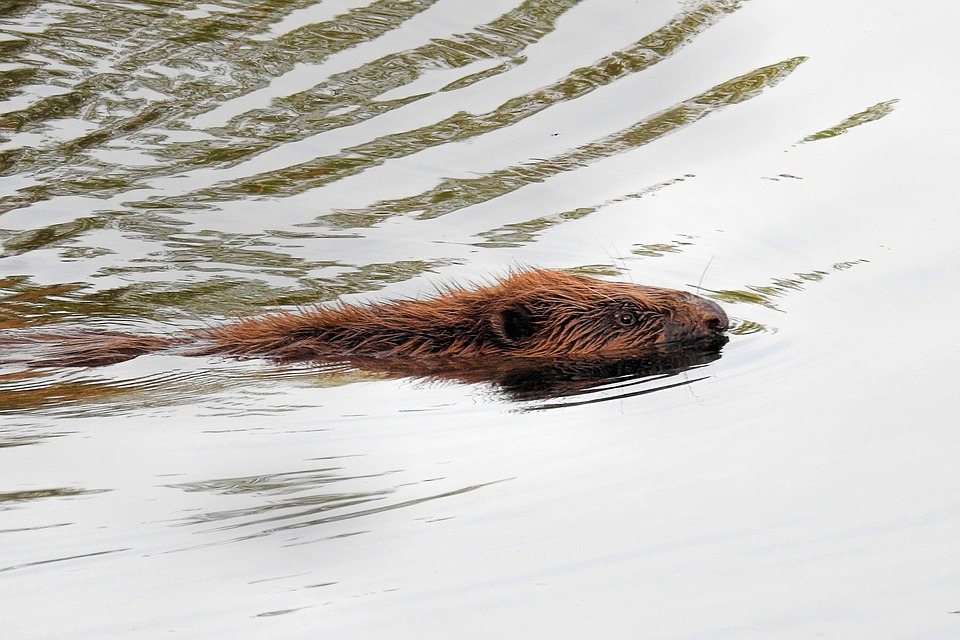Building Riparian Resilience Through Beaver Restoration
As this article explains, every aspect of desert ranching and conservation of wildlife is enhanced by beavers.
NOTE: this article was originally posted to Seventh-Generation.org and is reposted here on CircleRanchTX.com – we do not take credit for the words / thoughts provided below.
For many people around the West, water is the most important natural resource.
Intense use of water and of the lands surrounding stream and river corridors has been part of the West’s history and continues today. Understanding of how to manage land and water has emerged slowly. As a result, some areas are degraded and some wildlife species that use these areas are endangered. Restoration efforts and species protection are often contentious and expensive. Climate change threatens to make the existing situation worse, as snow packs drop, droughts are longer and more intense, punctuated by heavy rainfall. In sum, it is a challenge.

There are no pictures of New Mexico and few from around the West from before the beaver trappers arrived for the fur trade. But from written descriptions, we know that the “streamscapes” looked quite different two hundred years ago when large numbers of beaver were present. Streams and rivers typically traveled more slowly once past the steep mountainous headwaters, and traced a tortuous path from valley side to valley side. Their banks were lined with wide dense vegetation that could tolerate water-logged soils and hosted an abundance of birds and other wildlife. Moving further away from the stream would be found bands of trees and other vegetation, as the soil became progressively less soggy. Many local variations of this general pattern exist.
With the wholesale removal of beaver by fur trappers, all of this began to change. The dam and pond complexes that they built in streams, lacking maintenance, fell apart. Slowly. So it was not noticed. Streams flowed faster, straightened and began to erode down. The water table dropped. Vegetation shifted to plants that could tolerate drier conditions, including non-native species, and a number of species that depended on the old stream and vegetation communities became endangered. Many other changes were occurring at the same time (e.g. roads, railroads, and entire towns were built in stream corridors, cattle and sheep were introduced, fire was suppressed and water was diverted) and as a result, the role played by the loss of beaver dams was overlooked.

Why such big changes from the loss of one homely and humble rodent? Beavers are “biological engineers.” Through their dam- and pond-building activities they remodel stream corridors, creating “resilience.”
In a stream ecosystem, “resilience” translates to the ability to spring back after drought, flood, fire, or various types of intense human use. But ecosystems are not infinitely resilient. When an ecosystem is “stretched” too far, it will break – like a rubber band – and shift to a new state.
A healthy stream corridor is resilient. A resilient stream corridor is also in the best position to spring back from the anticipated greater droughts, floods, fires expected under a changed climate.
HOW DO BEAVER BUILD RESILIENT STREAMS?
Beaver dams and ponds allow continuous stream flow, but slow down the water. In a watershed with many beaver dams, heavy precipitation or run-off events cause less flooding, erosion, and channel cutting. Water from beaver ponds can be stored temporarily in the surrounding soil, then during periods of low stream flow, it is slowly released, helping to maintain stream flows later into the season when vegetation, fish, wildlife and people most need them.

Healthy riparian zones are functional corridors for local wildlife and migratory birds, a role that is already important, but becoming increasingly critical as species respond to drought, warming and other climate shifts.
Beaver dam-pond complexes create patches of wetlands and moisture-loving vegetation throughout the riparian corridors, greatly increasing the variety of habitats needed to support communities of plants, birds, insects, fish and other wildlife. In addition these wetlands filter water that passes through leaving cleaner water to flow downstream. Clean water is good for people, for fish, frogs and other wildlife and even for livestock – livestock drinking clean water will gain more weight.
And speaking of livestock – in most situations, beaver on a stream will increase forage production. How do they do this? Their dams and ponds raise the water table, increasing subirrigation. A complex of beaver dams and ponds can stop or even reverse stream channel erosion by trapping silt, and spreading water into the soil across wider riparian areas.
The Institute has been working with ranchers to demonstrate their value for several years. Recently we made a film featuring unscripted interviews with ranchers in New Mexico, Nevada, and Idaho.
BUT THERE’S MORE…
The value of beavers goes beyond their biological engineering skills – they are also cost-effective. In contrast to human-engineered restoration projects, beavers are the only “engineers” that construct and maintain the physical elements – complexes of ponds and dams – that are the foundation of resilience. And beaver “construction projects” are relatively low in cost, since beaver provide the initial labor, the maintenance, and require no pay or equipment.




In New Mexico, the Department of Game and Fish estimates that approximately 8000 beaver are present in the state. Sounds like a lot, right? But the analysis performed by the Institute found that, if suitable habitat was occupied, a conservative estimate of the state’s beaver population would be approximately 62,000 beaver. So at a population of 8000 beaver qualifies as “ecologically absent” because: 1) there are not enough to build the multiple dams and ponds that really make a difference; and 2) they are found in limited areas where they are tolerated.
Increasing the abundance of beaver in New Mexico and all around the West could do a lot to help wildlife and to help livestock production. But there will also be management needed. There will be conflicts between humans and beaver, just as there are conflicts between humans and wildlife wherever the two co-exist (a short list as a reminder: bears in the garbage, skunks under the shed, elk smashed on the front of the car, rabbits and deer that voraciously consume your flower and vegetable gardens and birds that peck holes in every last apple on the tree). But in the right places, and using the most effective management tools, conflicts can be intelligently managed so that the benefits delivered by beaver outweigh the drawbacks.
Those are the keys: Right places. Proactive management.
Visit the other project pages and download the report to the right to learn more.
PROJECT GOALS
- Restore and build resilience in stream corridor ecosystems using the biological engineering skills of beavers.
- Build long-term support for larger beaver populations by developing new knowledge and management tools.
HOW DOES THIS PROJECT ALIGN WITH THE INSTITUTE’S VALUES?
Entrepreneurial – Applied Science – Individual restoration project sites are monitored to quantify the results of beaver reintroduction. While there exists a rich literature on beavers, almost no studies have examined the before-beaver and after-beaver condition of a watershed.
Collaboration – The majority of the restoration work and other sub-projects are taking place on privately owned ranches and other land. Since ranchers and old-school “enviros” have a long history of bitter conflict in the West, we hope this program will help to change that history. (Note to ranchers – the Institute is not “old school.”)
Impact – It is almost impossible to overstate the positive impact that an abundant population of beavers would have on the right places in the state. Where this can occur, we expect to see resilience restored to stream corridors, generally considered the most valuable and threatened ecosystems in the Southwest.
PROJECT PARTNERS
- USFWS Partners for Fish and Wildlife Program, New Mexico and Nevada
- NM Department of Game and Fish
- Private landowners
- Other funders, donors and partners
ACCOMPLISHMENTS TO DATE
- Completed protocols developed for live-trapping beaver, care of captive beaver, transportation, release and radio-tracking of beaver, habitat evaluation and habitat improvement for beaver.
- Development of low-cost monitoring of stream corridor response to beaver reintroduction.
- Advance planning methods for reduction of beaver impacts.
- Development of hands-on expertise in our staff in all of the above methods.
- 2011. Completion and distribution of original research report – Beaver as a Climate Change Adaptation Tool: Concepts and Priority Sites in New Mexico. This report was a statewide spatial analysis of potential beaver habitat, overlaid with climate change threats and prioritized areas for biodiversity conservation.
- Presentation of poster Rethinking beaver: can an old nuisance be a new tool to adapt Southwestern stream corridors to climate change? at the 2012 North American Congress of the Society for Conservation Biology. Winner of the best poster award at the conference.
- 2013. Model beaver reintroduction project completed with successful reintroduction of beaver at a restoration site in New Mexico.
- 2016. Completion of the film Rethinking Beaver: old nuisance or new partner?”
- 2016. Tour of the West with the film “Rethinking Beaver: old nuisance or new partner?” Screenings of the film at ranches and towns along with discussion sections and meet the filmmaker sessions.
- 2016. Presentation of work to date in Boise Idaho at the beaver restoration workshop and science exchange hosted by the USGS and US Fish and Wildlife Service.
- 2017 Film screenings at the Cowboy Poetry Gathering in Elko and at the Quivira Coalition Conference.
- Current activities and beyond… the Institute’s current focus is on the workshops “Living with beaver on your ranch” although we continue with stream restoration and flow device construction.




